It looks like finger trouble may have been responsible for the sticking rear brake caliper on Max Verstappen’s Red Bull. A suspected improperly secured caliper brought about his first mechanical retirement from a Formula 1 race since this same event two years ago – and effectively secured Carlos Sainz and Ferrari's Australian Grand Prix victory.
But there’s every indication that Sainz could have made a fight of it even if the Red Bull had been fully reliable.
Graining of fronts and rears on both the medium and hard compounds made the tyre equation really challenging on Albert Park’s still-smooth surface. Just like the last time graining was a limitation – Las Vegas last year, pictured below – the Ferrari was very quick and consistent.
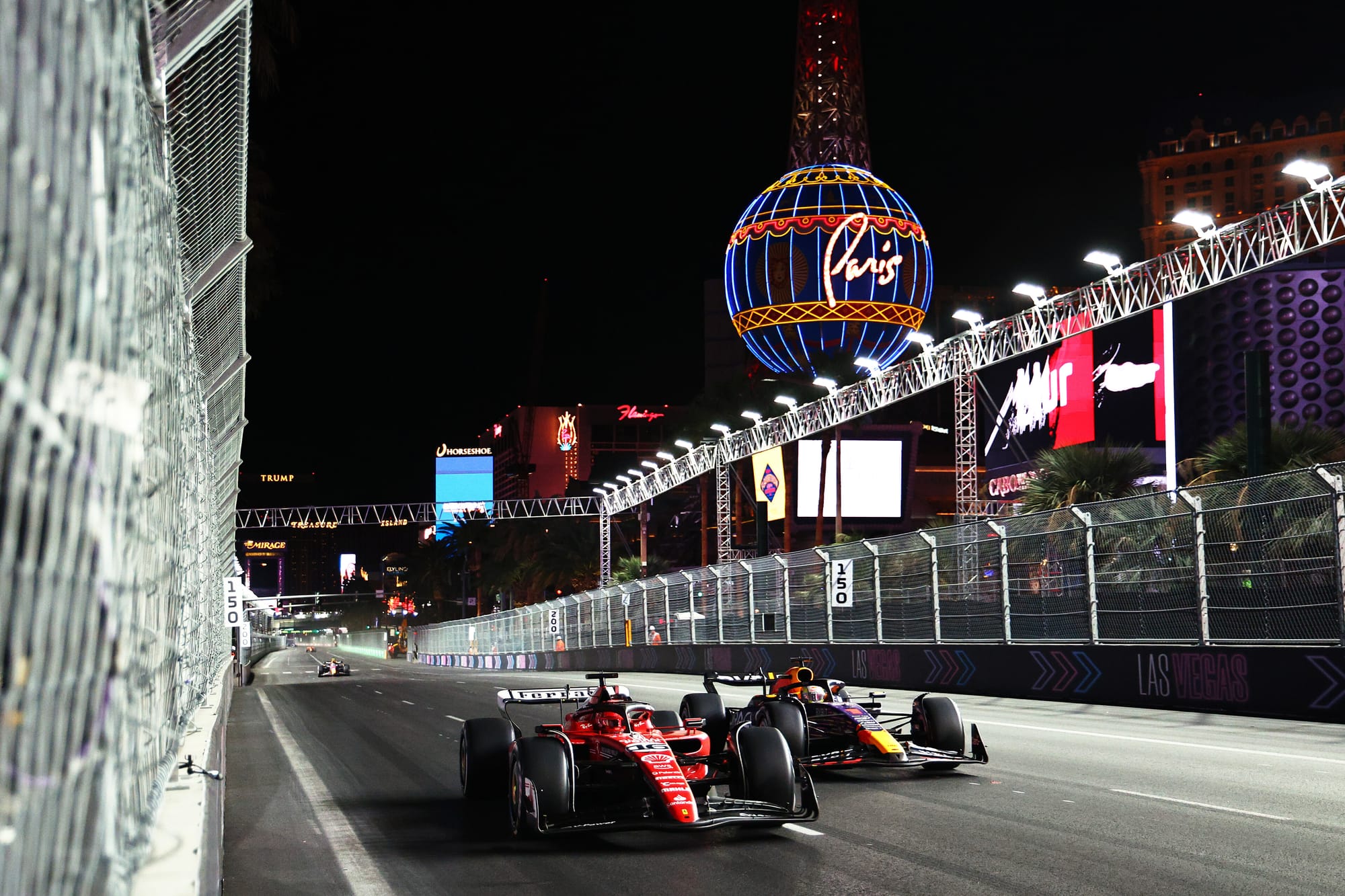
Recall that only an inopportunely-timed safety car lost Charles Leclerc that race to Verstappen. Furthermore, this Ferrari is a way better car than that one.
Sainz made brilliant use of it, with a performance all the more remarkable given his bed-ridden, post-op lead-up to this weekend. Having only lost pole to Verstappen through a high-speed snap in the seventh-gear Turn 9-10, he went into the race with the strong feeling that it wasn’t necessarily going to follow the pattern of Red Bull increasing its advantage on race day through superior tyre usage.
He and the Ferrari were handling the graining challenge well. Red Bull had a scrappy Friday and even if it had got much closer to the car’s sweet spot by the end of qualifying, there was nothing to suggest that its control of the graining would actually be better than Ferrari’s.
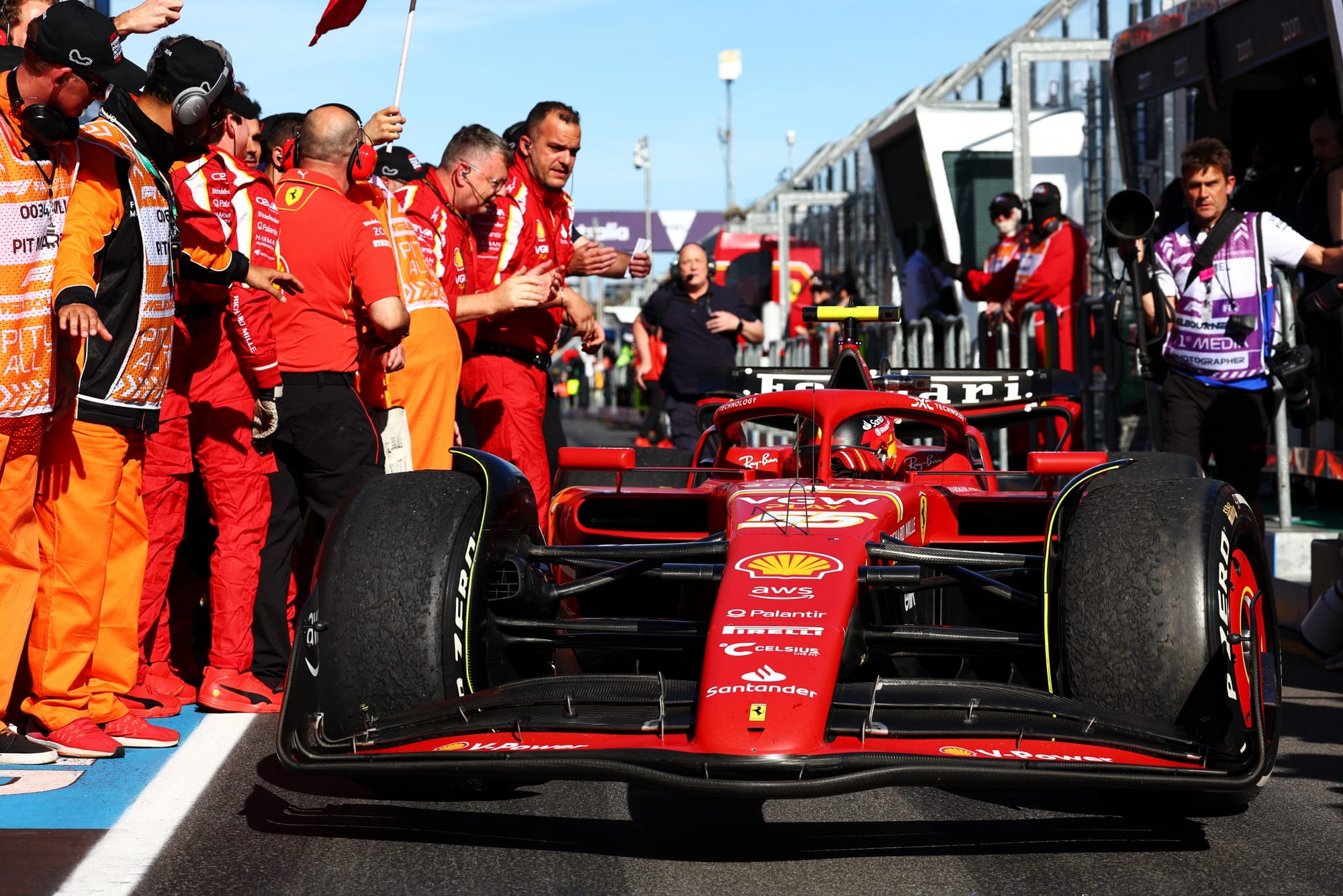
The switch by Pirelli to the softest compound range moved the race decisively to a two-stop.
On a track still smooth from its 2022 resurfacing and with not much for the tyre to bite into, relatively little energy is fed into the core structure of the tyre, leaving the tread unsupported. Hence the graining of fronts and rears on all three compounds, reducing their wear life.
This was a wear-limited race, not a thermal-limited one. What the Red Bull has been so superb at in the last three seasons is controlling the thermal degradation better than other cars. That wasn’t the issue around here.
Being in clean air was a big part of being able to keep that graining under control and Verstappen – having reported that the balance felt great on the lap to the grid – won the start and had pulled out a second on Sainz around the opening lap. But with DRS available from the second lap, Sainz was closing back upon him, with every intention of fighting for position.
Verstappen’s sticking left-rear caliper gave something of a handbrake effect as he went through Turn 3 on the second lap, the resultant twitchy moment over the exit kerb giving Sainz the run which allowed him to pass on the DRS run up to Turn 9.
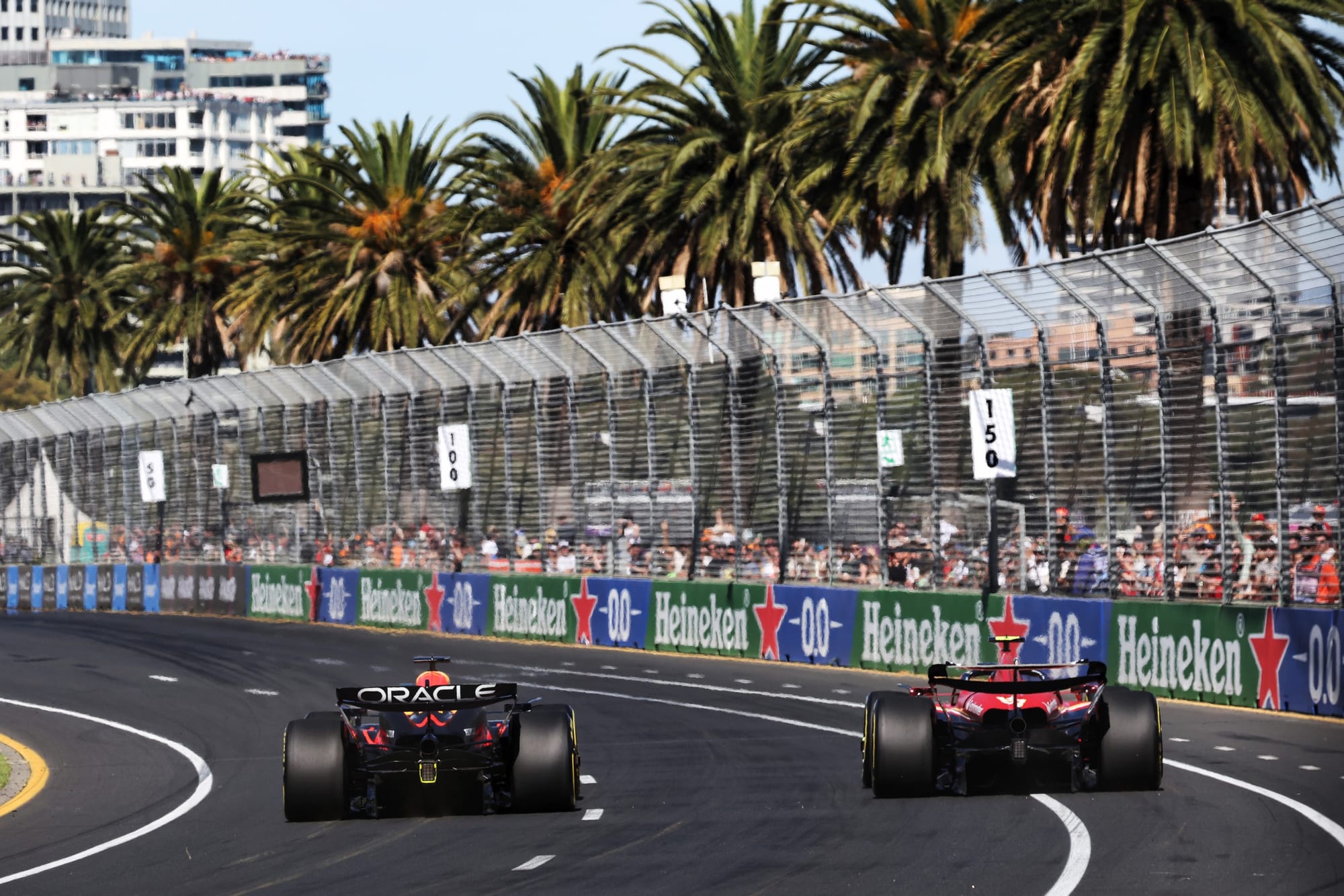
Then the smoke from the sticking caliper, the heat build-up within the sealed ‘cake tins’ immense and you probably saw the mini explosion as the pressure exploded those tins just as he was entering the pitlane to retire.
LAP 5/58
— Formula 1 (@F1) March 24, 2024
Verstappen makes it back to the pits. His pit crew can't do anything. He's not coming out again. He's OUT ❌#F1 #AusGP pic.twitter.com/GqQW5W2CHh
It was relatively straightforward from there for Sainz. In clear air he was able to look after the tyres while maintaining a good pace.
Lando Norris was holding off Leclerc in a McLaren not quite as quick, but with the other McLaren of Oscar Piastri just behind threatening to undercut Leclerc. Ferrari was thereby obliged to bring in Leclerc early on lap nine (freeing Norris to stay out, as Piastri followed the Ferrari in). This undercut Leclerc past Norris but in the process put him at a further disadvantage to Sainz.
McLaren’s response to Leclerc’s stop – to run Norris as long as possible so as to increase his tyre advantage over Leclerc in the next stint – allowed Sainz to stay out until required to respond to Norris’ stop. That was lap 15. Meaning that Sainz rejoined over 2s in front of Leclerc and on hard tyres six laps newer.
At this point Ferrari issued the hold station instruction. Not that it needed to, as Leclerc was at a tyre age disadvantage and in dirty air. That’s how in control Sainz was of this race. He was running both faster and with better tyre deg than anyone else. He and car were in a very sweet spot.
Perez's subdued race
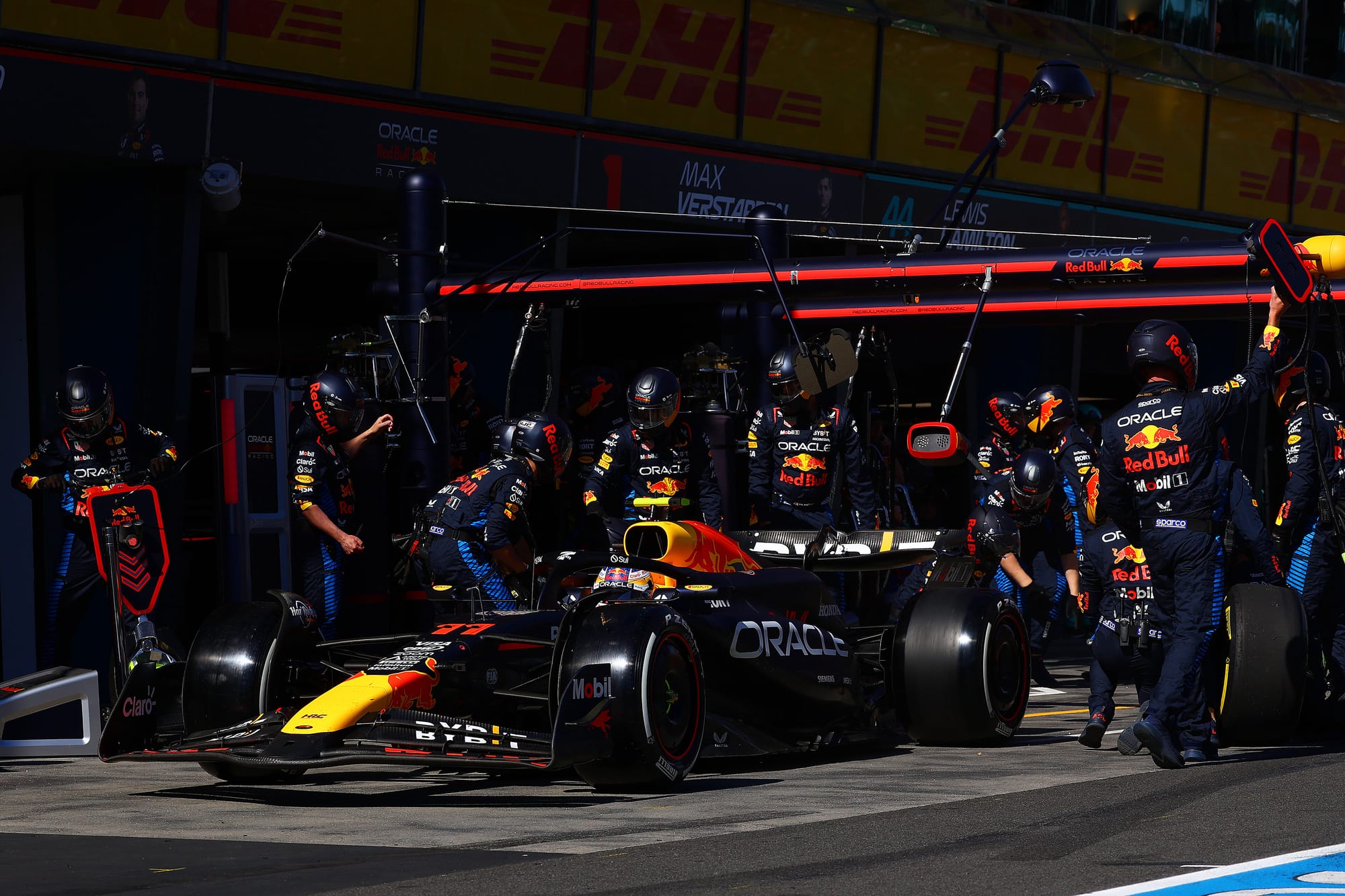
Ferrari was probably genuinely Red Bull-quick here and that’s a theory backed up by Sergio Perez’s race to fifth and not his customary second.
He made good initial progress from his penalty-imposed sixth place on the grid and drew incredulous summaries of the car’s performance as he passed the Mercedes drivers. He was behind Fernando Alonso’s Aston Martin only through Fernando having boosted his position by starting on hards and running long enough to take advantage of a VSC for Lewis Hamilton’s broken-down Mercedes.
Perez was running around a second per lap faster than the Aston Martin (with Alonso now on the mediums and driving them very delicately to keep the graining at bay) and overook it with full-co-operation from Alonso – who wished to use the benefit of its DRS to pull away from Russell, whose Mercedes was probably marginally faster.
But Perez then lost that early pace. As he had passed the Aston he picked up a tear-off visor strip which lodged itself in part of the underfloor which cost around 20 points of downforce (around 0.2s worth). After that, he was no threat to the McLarens.
Fast but not quite fast enough
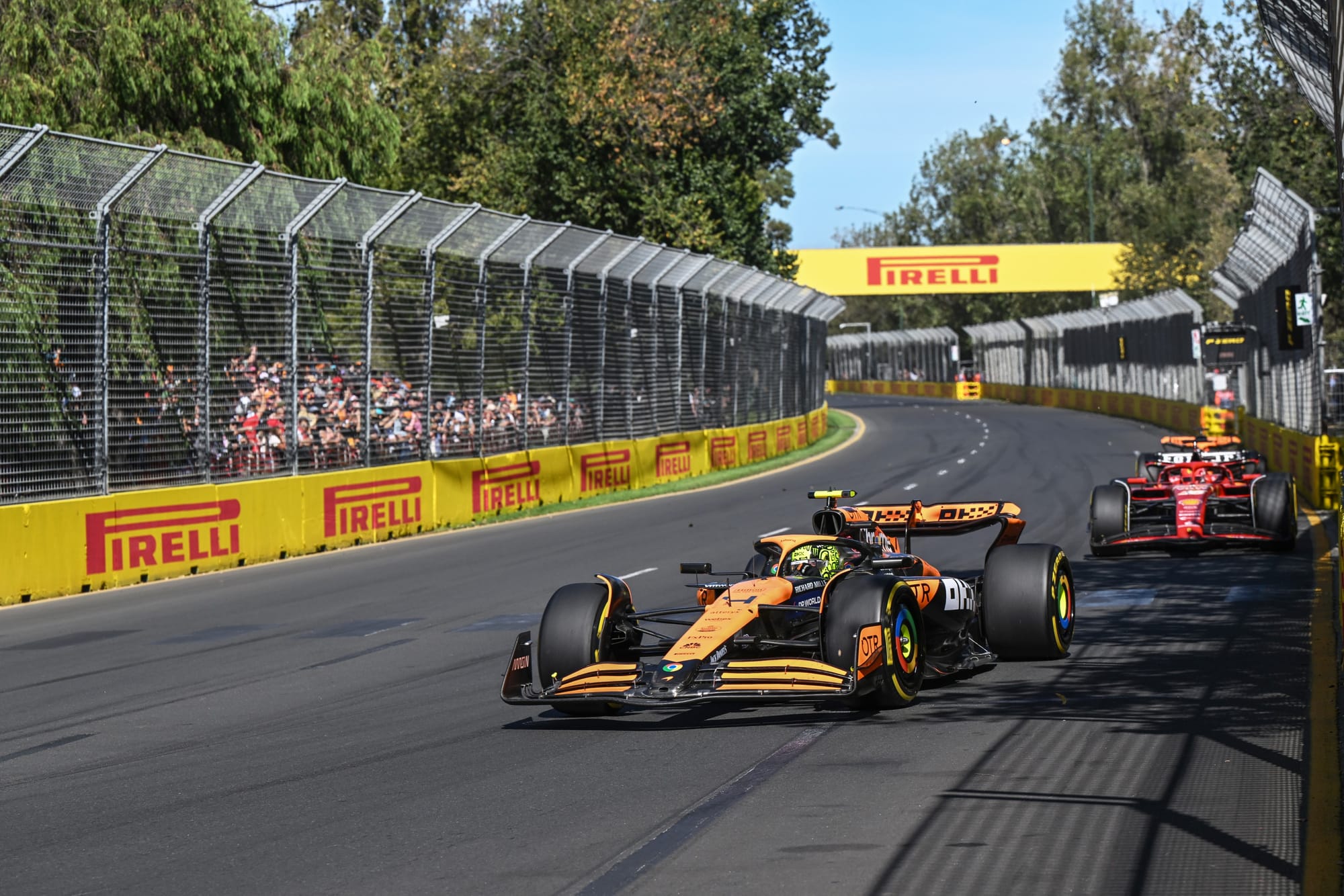
McLaren was quick enough here to keep the pressure on Leclerc, but over a single lap gave far too much time away in the DRS zones.
It continued its two-pronged attack on Leclerc, but Sainz was gone, that initial 2s advantage stretched out to over 8s by the second round of stops. Piastri’s earlier stop had undercut him past Norris, but he was instructed to swap back so as not to waste the latter’s tyre advantage as Norris sought to get on terms with Leclerc.
Leclerc’s first set of hards in stint 2 gave him all sorts of problems and he pitted early to fend off the Norris undercut threat. His final set was much better and he had no problem keeping the McLaren behind him despite tyres six laps older. He was even able to take the race’s fastest lap just before Russell’s accident brought out a VSC.
Mercedes' bleak weekend capped off
LAP 58/58
— Formula 1 (@F1) March 24, 2024
Big crash for George Russell 💥
The Mercedes driver radioes to say he's okay.
The race will finish behind the Virtual Safety Car #F1 #AusGP pic.twitter.com/SjooKJ8Y5v
Once bereft of Perez’s DRS-boost and slipstream, Alonso had been caught by Russell. Into the penultimate lap Russell was all over the Aston when Alonso chose to brake for Turn 6 100 metres earlier than at any other time in the race, and to then release the brakes and reapply them. It caught Russell by surprise and in combination with the dirty air contributed to him sliding through the gravel and hard into the tyre barrier, putting the car on its side.
That just put a cap to a dispiriting Mercedes weekend. Intermittently quick in the practices, but half a second off when it counted, Russell was the faster-qualifying of them, with Hamilton even failing to make Q3.
Needing to quickly pass the slower cars ahead of him (the two Aston Martins and Yuki Tsunoda’s RB), Hamilton was fitted with the very rarely-seen soft. Had there been an early safety car, Hamilton could have pitted and run the race on the ideal hard/hard combination, the hope being to use a strategy offset to compensate for the lack of performance.
He beat Stroll off the line and undercut himself past Tsunoda before the power unit failure on lap 17.

